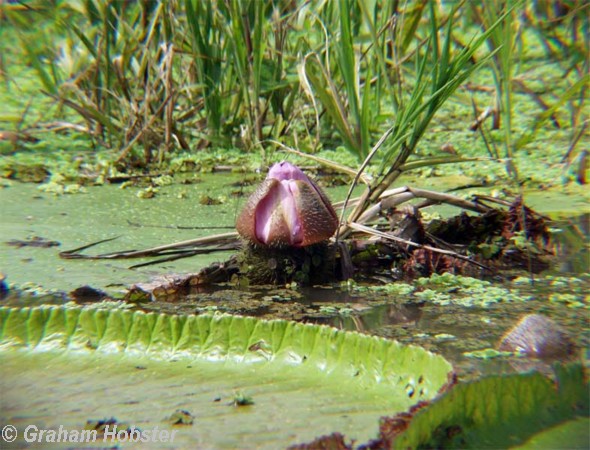
Index Page [<< Prev] [Next >>]
The flowers have a
fascinating life history.
On the first night, the flower unfurls and scarab beetles are drawn to its butterscotch-and-pineapple
scent and pure white color.
They are also drawn to its warmth. The researchers found that the flower actually
heats up. If the air temperature is 80° F then the inside of the flower
can be a cozy 98° F. The beetles crawl inside to stay warm and eat special
supplies of sugar and starch. Later that night, the flower cools, closes, and
the beetles are trapped inside. As it closes, the flower changes color from
white, to pink, to purple.
All the next day the beetles stay
inside, munching their special food supply. At dusk on the second night, the
anthers inside the flower release pollen, the flower opens, and the beetles
fly off covered with pollen. The hungry beetles go looking for a warm, fragrant,
pure white flower with a new food supply. As they settle down for a feast, they
deposit pollen on the stigma of the new flower and the cycle repeats itself.
After the second night, the pollinated flower closes and sinks. Seeds form in a pod underwater. When the seeds mature, the pod decomposes, and the seeds float to the surface, carried along by the Amazon's flood to start a new plant.
